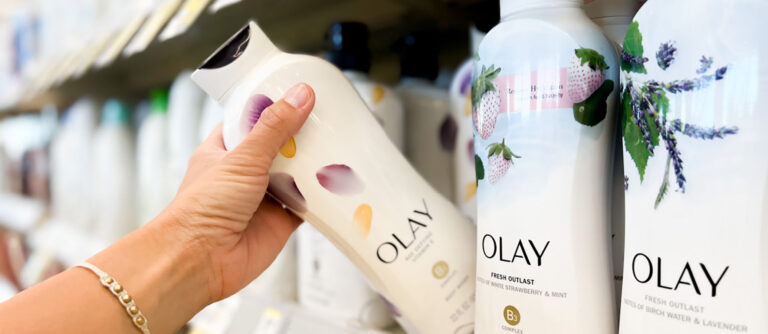Just because a brand is under-performing does not mean it should be reinvented. Five key questions can help you make the right decision.
In the 1990s, Procter & Gamble set its sights on a diamond in the rough. Oil of Olay had joined its portfolio in 1985 when P&G rescued Richardson-Vicks from a hostile takeover by Unilever. A relatively small business with annual sales of $200 million, it had developed a niche international following but had become a stale brand – popularly mocked as “Oil of Old Lady” by young women who, as children, watched their mothers, aunts and grandmothers apply the beauty fluid before going to bed.
P&G felt that this brand could shed its oily heritage with a proposition that more widely addressed the needs of modern women. In 2000, it ditched the ‘oil’ and relaunched Olay with a breakthrough product, Olay Total Effects. Grounded in insights about how young women identified signs of aging and their desire to maintain youthful skin, Total Effects offered seven different compounds in a single formula designed to more effectively prevent skin aging. New packaging and marketing sent a clear message that the product had become sophisticated and contemporary; moreover, P&G brilliantly overhauled the brand so that its new proposition, products, and technical benefits appealed to a wider target, including both existing and emerging consumers.
This new proposition and offerings enabled P&G to sell Total Effects for three times the original Oil of Olay price in mass channels like Walmart and Walgreens. Additional plat- forms that followed – Regenerist, Definity, Pro-X – further expanded Olay’s customer base and credibility by addressing the specific skin care needs of different consumer segments. What’s more, these new offerings allowed Olay to push price points even higher and expand its shelf presence in mass channels – notoriously difficult feats. Internationally, Olay continued to scale and evolve its channel strategy. In Asian markets, it entered department stores and introduced beauty consultants that further reinforced its technical benefits and ‘mass premium’ image and pricing.
Within three years, Olay had become one of P&G’s billion-dollar brands. By 2009, it was the world’s fourth-largest beauty brand and a significant player in the burgeoning Asian market, accounting for more than $2.5 billion in annual revenue. In under a decade, the company had turned Oil of Olay from a dowdy laggard into one of the most vital brands in beauty. P&G attributes this success largely to a holistic, design-led approach that leveraged research findings about the target audience in order to redefine the value proposition, create compelling offerings, utilize P&G’s proprietary production technologies, and enter new channels. The fact that it was later able to turn this approach into one of the organization’s core processes was just icing on the cake.
Does Your Brand Qualify for Reinvention?
Many companies have attempted brand reinvention with far less spectacular results. The problem is, most struggle when launching new brands, because they lack the start-up mentality of being nimble, resourceful and patient enough to nurture a fledgling brand into a star. In addition, just because a brand is under-performing does not necessarily mean it should be reinvented. Five key questions can help to assess whether or not to invest in brand reinvention:
- How flexible is the brand? It’s important to note that a strong existing proposition can sometimes make a brand harder to reinvent.
- Is there market potential? Existing and adjacent category growth should be assessed for under-leveraged markets.
- Is it on trend? Brands on the wrong side of history, like Hummer, are difficult to align with growing trends.
- Is its revenue sizable? Sizable sales figures may suggest under-utilized consumer love.
- Is it strategically useful? Brands that signify broader opportunities that a company wants to take advantage of across the portfolio can help build internal capabilities.
If your brand can answer all of these questions in the affirmative, chances are good that it has the potential to be transformed from a laggard into a star. Executing against that audacious task, however, requires a reconsideration of many or even most of the elements that have made the brand what it is.
Over the past 14 years, we have discovered clear patterns for success and failure through our collaborations with large organizations going through this process. It’s worth noting that a reliance on the Seven-P framework (Product, Price, Promotion, Place, Packaging, Positioning and People) is insufficient for brand reinvention because it fails to properly address channel, partners, production and distribution, which are essential for delivering a complete brand experience. We have developed our own simple framework (see Figure One) to describe the five components of a comprehensive brand reinvention strategy.
Redefine your brand proposition to stay fresh and relevant.
There was a time when slogans were the most important tool a marketer could use to convey a value proposition to consumers. Succinct and explicit, a slogan communicated the benefits of a company’s goods and/or services. Even as advertising evolved in sophistication, the nature of media as a one-way conduit kept control of messaging within a company’s grasp.
In the last 20 years – the age of information technology – we’ve seen a huge shift towards the democratization of communication. Consumers blog, tweet, comment and otherwise craft messages that are as sophisticated and influential as those any advertising or media company might produce. Brands are no longer solely created and managed by the businesses that own them. Today, brand propositions are a two-way conversation, which is why a powerful message not backed by business substance struggles to make an impact.
Case in Point: Barney’s New York. When Barney Pressman opened his discount menswear store in New York’s garment district in 1923, his vision was to provide boys and young men with the quintessential symbol of coming-of-age: their first tailored suit. The clothing at Barney’s Boys Town came from showroom samples, retail overstocks, and manufacturers’ closeouts at auctions and bankruptcy sales; Barney threw in the added value of custom tailoring for a compelling retail experience at bargain prices. The company’s first slogan of “No Bunk, No Junk, No Imitations” suggested to a nascent middle class that they, too, should be discerning about fashion – and that Barney’s was uniquely situated to help them do just that.
Forty years later, this core proposition was threatened by a large number of competitors who sought to compete on lower prices. Fred Pressman, Barney’s son, realized that the company’s approach would not sustain value. He also realized something about his father’s business: in spite of its low prices, Barney’s sold top-quality fashion, not cheap knock-offs. In a 1973 interview with BusinessWeek, Fred proclaimed that, “My father and I have always hated cheap goods….I didn’t want to sell low-end merchandise.”
Fred shifted the brand proposition away from the benefit of low prices towards style and unique design. He removed ‘Boy’s Town’ from the name and got rid of the overstock inventory that undermined a premium message. In its place, he introduced a new slogan, “Select, Don’t Settle,” and backed it up with imported European suits by up-and-coming designers displayed in a new gallery-like store environment. He also kept his father’s dedication to tailoring and service and its emphasis on quality. Today, Barney’s is a world-class, high-end department store bearing none of the negative vestiges of its discount era, with stores throughout the U.S. as well as in London and Tokyo.



